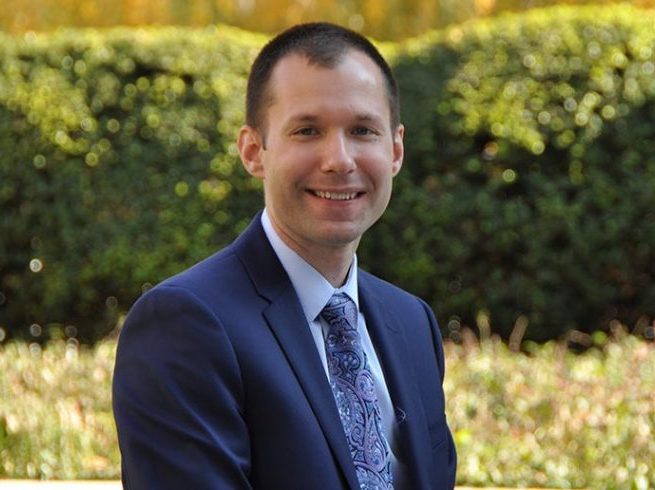By Bailey Hosfelt

Professor Luisita Torregrosa has had a far-reaching career in journalism outside of her Lincoln Center classrooms. Torregrosa has traveled all over with her reporting, writing everything from long-form magazine articles to nonfiction novels.
But before she saw any bylines in big-name publications like Vanity Fair, Washington Post Magazine or Conde Nast Traveler, Torregrosa was an aspiring writer who could not get her foot past the reception desk, let alone in the door.
“I couldn’t get a job anywhere,” said Torregrosa. “I had no idea, no contacts – I didn’t know anything.”
Originally from Puerto Rico, Torregrosa first came to the United States at age 14 to attend Linden Hall Academy, an all-girls prep school near Philadelphia. From there she went to Winthrop University in South Carolina at just 16 years-old, majoring in journalism “on paper,” but also studying English literature and philosophy.
She contributed to Winthrop’s on-campus newspaper, mostly writing reviews about theater. When it came time to graduate, Torregrosa was 19.
Many women around her wanted to be teachers, settle down and start a family. While she was unsure exactly what she wanted to do next, she knew where.
“[I wanted to] get out of there as soon as possible, take the train and come to New York City,” she said.
Torregrosa grew up hearing about The New York Times and had a family that was engrossed with newspapers as well as law and politics. Her aunt worked as a columnist in San Juan, and, as a child, Torregrosa became fascinated by the lifestyle of a writer.
“I inherited and absorbed all of that,” said Torregrosa.
But the city that held so much value to Torregrosa also gave her great difficulty when trying to find work.
After doing menial jobs that she “wouldn’t wish on any [of her] students,” Torregrosa came to the realization that she would have to leave New York City first in order to make a name for herself in journalism.
She applied for newspaper positions in South Carolina (a place where her degree provided more traction) and soon thereafter solidified a position as a clerk for the city editor at The State. She brought coffee and opened mail, but she said she was grateful to start somewhere.
“The proximity to being in the newsroom was great in of itself because I got to know editors and reporters,” said Torregrosa.
She later moved to the copy desk at The State, which was where she first learned to be an editor. Torregrosa went on to work at The Charlotte Observer in North Carolina, starting as a copy editor and ending up as assistant managing editor.
But Torregrosa did not intend to stay in the South forever.
“I still had my eye on New York,” she said.
The next step was The Philadelphia Inquirer where Torregrosa was an editor. She was doing quite well and enjoyed the position, but decided to walk away.
“I wanted to go write,” Torregrosa said. “I thought, if I stay here, I can keep going up as an editor, but I’m not writing.”
With a fascination for the revolution in the Philippines and a desire for a change of pace outside of the editing desk, Torregrossa went to Manila. She ended up staying for two-and-a-half years, reporting for The San Francisco Chronicle while there.
And then, in a full circle kind of way, The New York Times was the one who wanted Torregrosa: not because she applied, but because they had seen her work.
“So I went to The Times,” Torregrosa said.
But, she said her job at The Times was not all she hoped it would be.
“I hated it – totally hated it,” she said. “I had been out in Asia covering coup de tetes and revolutions and I come back and I’m sitting in a desk.”
On another whim, Torregrosa followed her gut. She left what she once thought was the apex of newspaper publication for Tokyo with a friend who was named to Newsweek’s bureau there.
She eventually returned to The New York Times to “keep the wolves at bay,” citing money as a main concern in her decision. Torregrosa was there for another nine years until, once again, she thought to herself, I have to get out.
“I just said if I stay here, I’m never going to write. I’m never going to really see what I can do,” she said.
Despite having no savings, no contracts and no job, Torregrosa stood by her decision. She continued writing in the following years for outlets such as Politics Daily and the International Herald Tribune. Today, she regularly contributes to The New York Times, T Magazine and NBC News.
Torregrosa’s full-time teaching position at Fordham came to her in 2015, and she has been with the university ever since.
“If I have to put a value in what I do here, it’s that I bring a world of experience, both the good and bad,” she said.
In the classroom, Torregrosa teaches her students her trade without a single textbook, drawing on her years of experience in the field.






































































































































































































